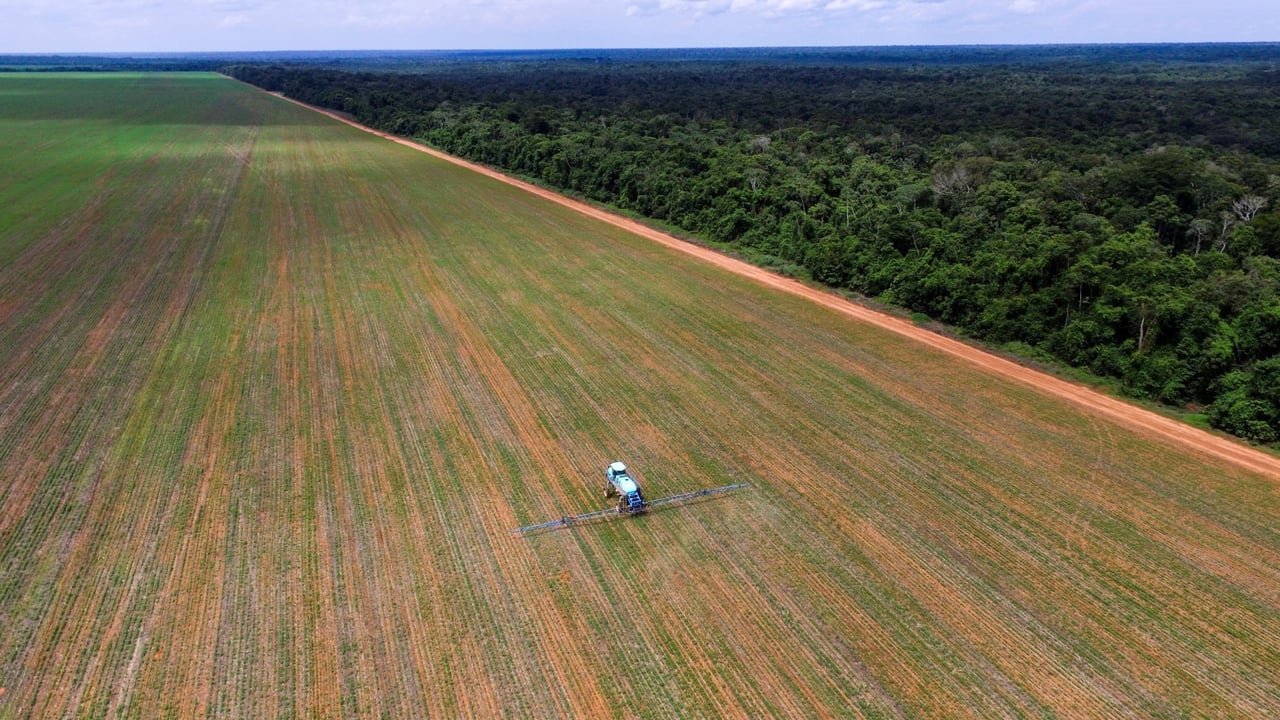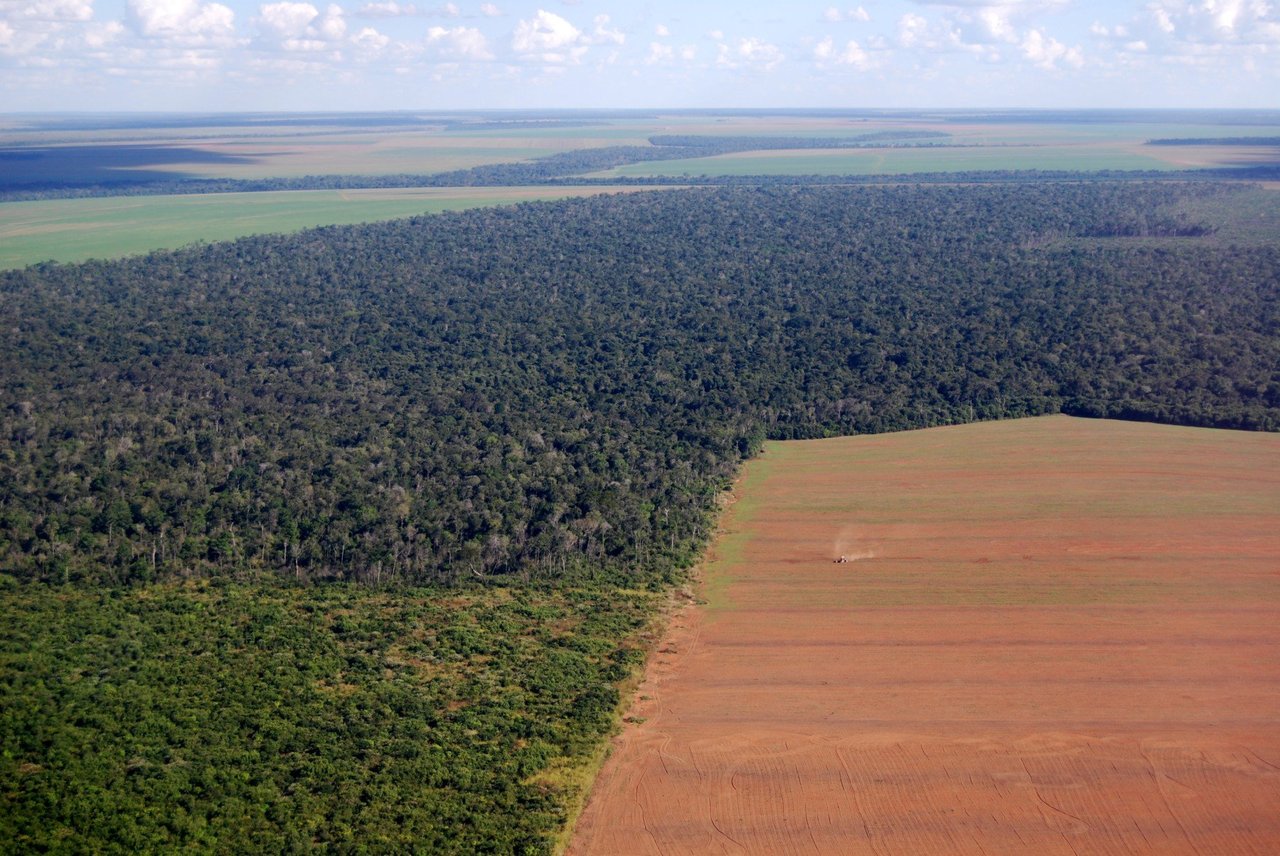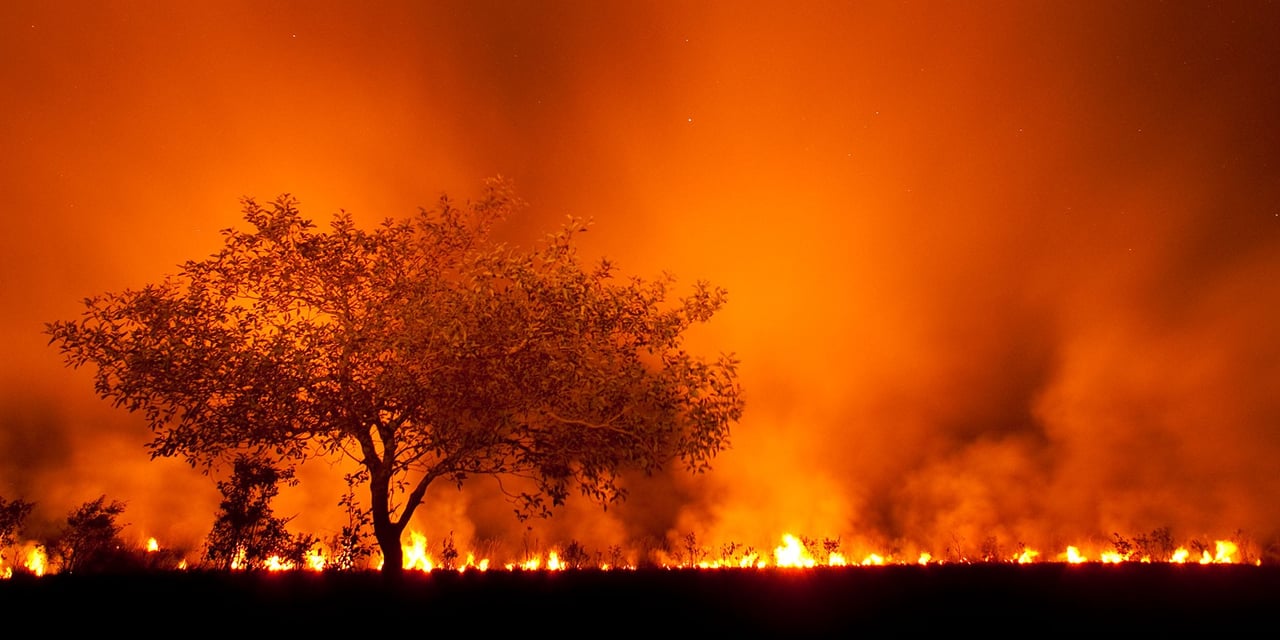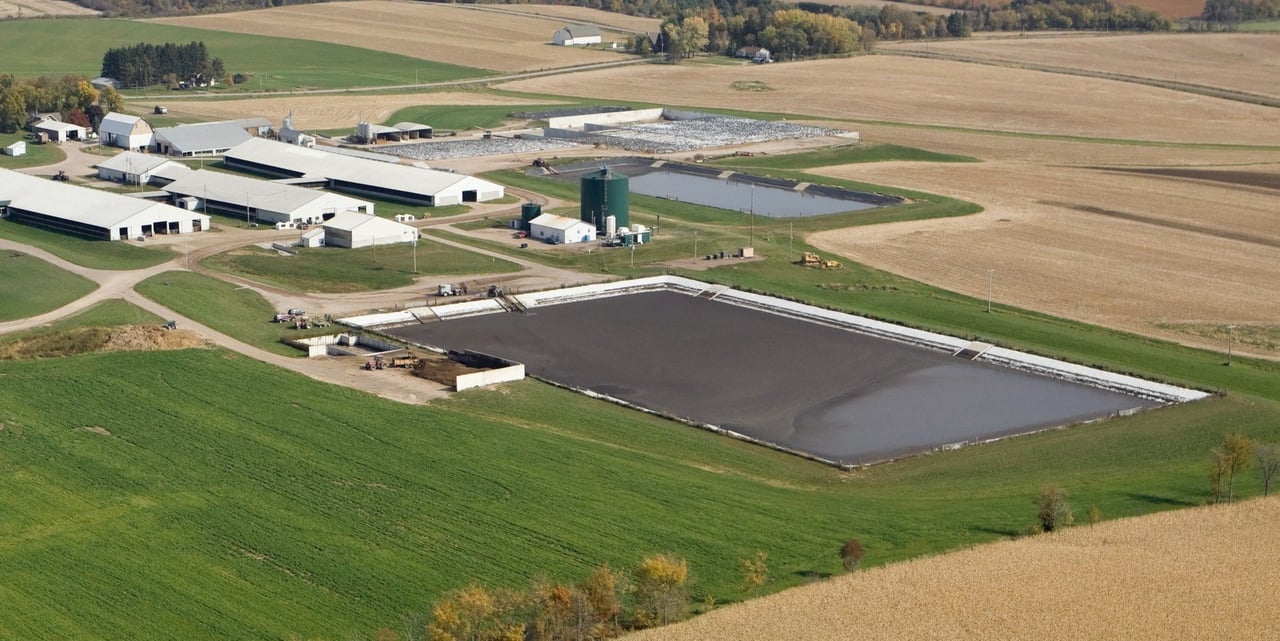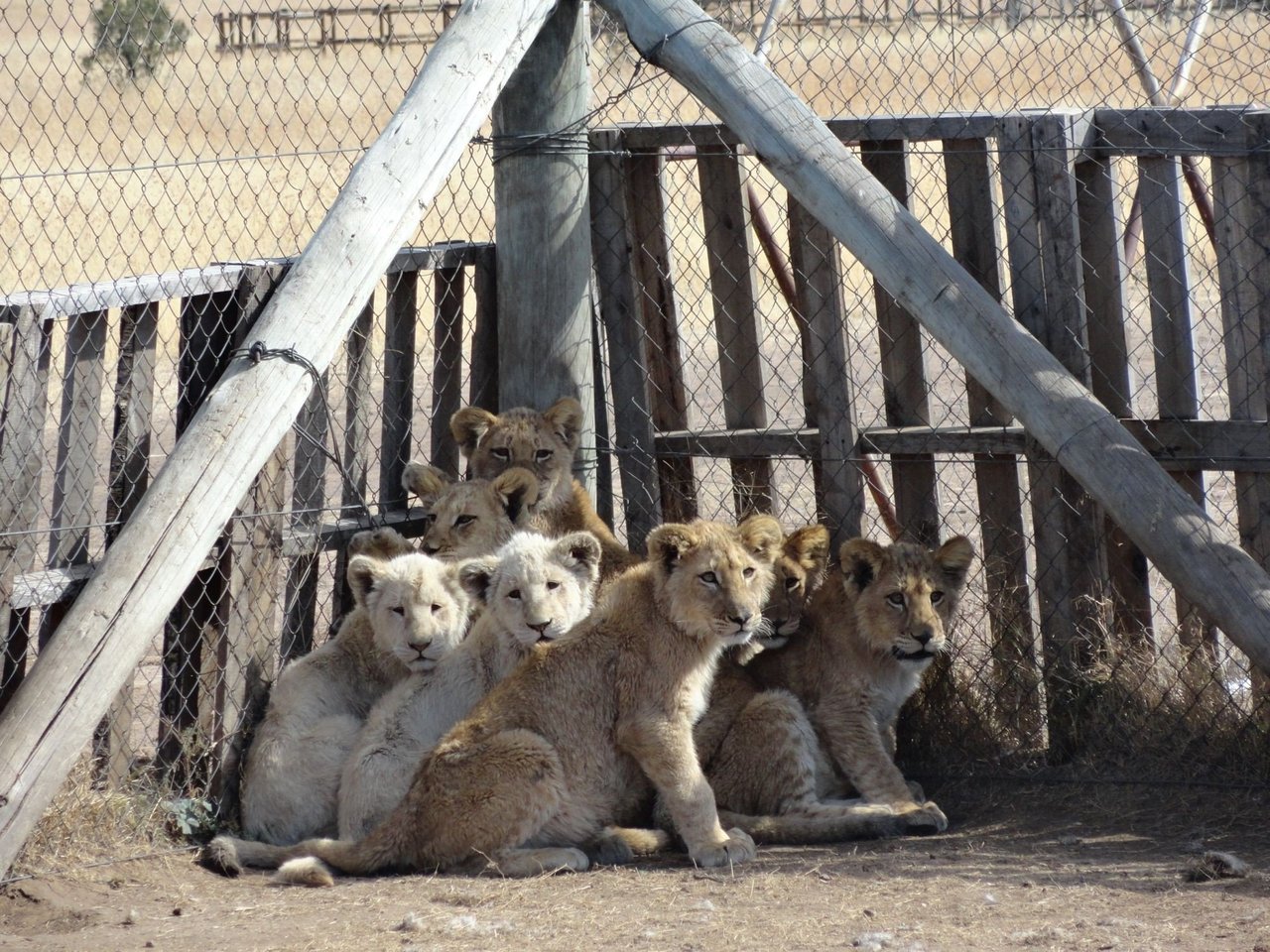
The welfare of both farmed and wild animals is more connected than you may think.
At World Animal Protection, we are working to protect both wild and farmed animals from the cruel systems that exploit and commodify them. While these represent two distinct program areas in our global campaigns for animals, there are many ways in which the welfare—or conversely, the exploitation—of wild and farmed animals intersect.
Pesticides
Nearly 250 million pounds of toxic pesticides are applied to soy and corn in the US just to produce these crops for feeding farmed animals. Factory farms raise billions of land animals—chickens, pigs, turkeys, and cows—in cruel, barren barns and pens, preventing them from grazing and foraging as they would naturally. Meat and dairy companies rely on billions of pounds of corn and soy for low-cost, high-calorie feed that makes farmed animals gain weight rapidly and puts enormous stress on their bodies.
Further, growing such massive quantities of just two crops entails applying millions of pounds of toxic chemicals to suppress the plants, insects, and animals that would otherwise make up our biodiverse agrarian ecosystems. Chemicals such as glyphosate, atrazine, and neonicotinoids are known to have devastating impacts on already threatened or endangered species. Glyphosate alone—100 million pounds of which was sprayed on corn and soy for animal feed in 2018—is known to pose risks to 93% of the plants and animals protected under the Endangered Species Act.
Deforestation
Increasing production of meat and dairy is consuming more and more land that wild animals consider home. The harms from the expansion of industrial agriculture are perhaps best exemplified by the alarming wildfires that continue to threaten biodiverse regions in Brazil. Many of the wildfires that have raged in the Amazon, Pantanal, and Cerrado biomes are the result of intentional fires set to clear land for intensive cattle farming or to grow soybeans for animal feed. These fires are killing and threatening precious habitats and species.
Last year, more than 1,000 individual fires threatened the Brazilian rainforest. We worked with local partners Pantanal Animal Technical Rescue Group, Instituto Homem Pantaneiro, Instituto Tamanduá, and Veterinary Care Center, to help rescue and protect wild animals threatened by the fires. Animals like Joaquim, a giant anteater cub who was abandoned by his mother who either fled or was killed during the fires in the Pantanal region.
Climate Change
Climate change is negatively impacting wild and farmed animals around the world. Polar ice melts are reducing the habitats and food sources of polar bears. Soaring temperatures and extreme heat waves have killed thousands of farmed animals trapped in poorly ventilated sheds. Severe natural disasters, such as Hurricane Florence in the US southeast in 2018, which are becoming more frequent and intense as a result of climate change, destroy factory farms housing thousands of animals and threaten wild animals in their wake.
Factory-farmed meat and dairy are a huge climate culprit often omitted from government and corporate plans to address climate change. Fossil fuels and other natural resources are exploited throughout the process of bringing feed to farmed animals and their products to our tables. A 2022 report from UN Intergovernmental Panel on Climate Change—drafted with contributions from 280 scientists—stressed that diets heavy in animal protein play a significant role in warming global temperatures and inefficiently use the limited land resources on the planet. The report places statistically high confidence on the statement that “Diets high in plant protein and low in meat and dairy are associated with lower [greenhouse gas] emissions.”
Ocean Dead Zones
Cramming thousands of sentient beings in tight quarters leads to aggressive behaviors, disease, and injury for farmed animals and creates an enormous amount of waste—too much for meat companies to manage sustainably.
This waste, often in the form of a semi-liquid slurry, is either sprayed onto cropland or stored in giant pits or lagoons. In either scenario, the nutrients, contaminants, and pathogens present in the manure can leach into nearby groundwater and surface waterways, eventually running off into the ocean. This results in excessive growth of oceanic vegetation like algal blooms, which kill the food sources of larger wildlife and deplete the oxygen levels. Areas of the ocean that contain little to no oxygen are called ‘dead zones.’
Farming Wild Animals
While it may be hard to believe, farming of wild animals for their meat, eggs, fur, skin, or other parts is a growing global problem. Lions and bears, for example, are farmed in several countries to fuel the global trade in their body parts, which are used in traditional medicinal products. The factory farming model has been forced upon ducks, geese, fish, bees, and octopuses in response to the increasing demand for animal-based food products.
You can help end factory farming and stop the killing of farmed and wild animals everywhere.
